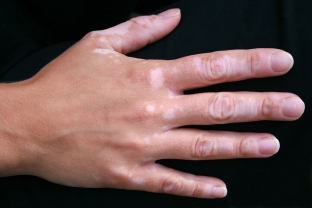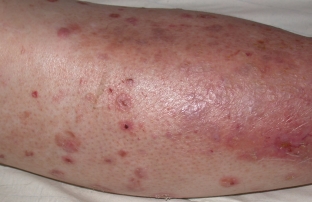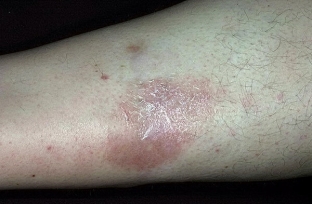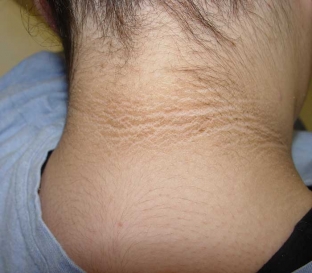Diabetes mellitus is one of the most common diseases today, which can have dangerous complications. Patients with diabetes should be aware of potential skin problems associated with the disease, and it is important to consult with a doctor before these problems get out of hand. In most cases, skin changes in diabetes mellitus, provided they are diagnosed early and treated promptly, are reversible or can be completely avoided.
Find out at estet-portal.com the most common skin changes in diabetes.
- The most common skin pathologies in diabetes mellitus
- Impaired blood circulation in the skin with diabetes
- Pathological conditions of the skin in diabetes mellitus
- Skin lesions in diabetes mellitus caused by insulin resistance
The most common skin pathologies in diabetes

Diabetic scleroderma is common in people with type II diabetes. It is rare and presents as thickening of the skin on the back of the neck and/or upper back. Treatment consists of strict control of normal blood sugar levels. Urea lotions and moisturizers should be used to soften the skin.
Read also: What contributes to the development of diabetes mellitus І type
Vitiligo is more common on the skin in type 1 diabetes and is manifested by skin discoloration. What other pathologies lead to a change in the appearance of the skin in diabetes, read further on estet-portal.com. The pathogenesis of vitiligo is the destruction of melanosomes – cells that produce the pigment melanin (the substance that gives skin color), resulting in white, discolored patches on the skin. Frequent localization: chest and abdomen, on the face around
Micro- and macroangiopathy are serious complications of both type I and type II diabetes mellitus. Angiopathy is manifested by narrowing of blood vessels, inflammation of their inner wall, deposition of atherosclerotic plaques on them. Angiopathy affects vessels of large and small caliber, that is, throughout the body, including those vessels that form a blood supply network at the level of the skin.
Follow us onFacebook! These changes occur gradually, and the skin in diabetes mellitus suffers chronically from a lack of oxygen.

hair loss.When skin damage occurs in areas of atherosclerosis progression, the healing process takes much longer than on healthy skin, which is associated with a violation of trophism.
Skin pathologies in diabetes mellitus include the following changes:
diabetic lipodystrophy;
- diabetic dermopathy;
- sclerodactyly;
- eruptive xanthomatosis;
- diabetic pemphigus;
- disseminated
- granuloma annulare. Pathological conditions of the skin in diabetes

Diabetes insipidus: features of diagnosis and therapy Sclerodactyly – a complication of diabetes mellitus, in which the skin on the fingers and toes thickens, becomes waxy and tight, the mobility of the interphalangeal joints is disturbed, it becomes difficult to straighten the fingers. Changes are irreversible.
Xanthomatosis erupacea occurs as a dense, waxy, pea-like yellow plaque on the surface of the skin in diabetes mellitus, which is provoked by an increase in the level of triglycerides in the blood. The plaques are itchy, often surrounded by a red halo, typical localization is the face or buttocks, as well as the back surface of the arms and legs, especially on the folds of the limbs.
Pemphigus diabeticus or diabetic bullae present with changes similar to burn blisters. Blisters can occur on the fingers, hands, feet, feet, shins, and forearms. Diabetic
pemphigusis not accompanied by painful sensations and resolves on its own.
Read also:Type 2 diabetes: what lifestyle modification includes Disseminated granuloma annulare is a well-defined annular or arcuate area of the skin. Elements of a rash of granulomas on the skin with diabetes often appear on the fingers and ears, and can also occur on the chest and abdomen. The rashes are red, red-brown
, or flesh-colored. Skin lesions in diabetes mellitus caused by insulin resistance

Acanthokeratoderma is manifested by darkening and thickening of the skin in certain areas of the body, especially in the area of skin folds.
Read also: Drug therapy in the treatment of diabetes complications The skin of diabetes mellitus becomes hard, rough, turns brown, and sometimes there are elevations described as velveteen on it.
Most often, changes in acanthoderma, which are mistakenly perceived as papillomas on the skin, occur on the side or back of the neck, in the armpits, under the breasts and in the groin. Sometimes changes occur on the skin of the fingertips.
acromegaly,Acanthokeratoderma usually precedes diabetes mellitus and is therefore considered a marker. It is important to remember that some other diseases can also be accompanied by or cause skin acanthosis (
Itsenko-Cushing's syndrome). It is believed that it is acantokeratoderma that is a skin manifestation of insulin resistance. Thus, if skin changes are detected in diabetes mellitus, it is necessary to contact an endocrinologist in order to correct the treatment or additional control of the underlying disease.
Follow our news on







Add a comment